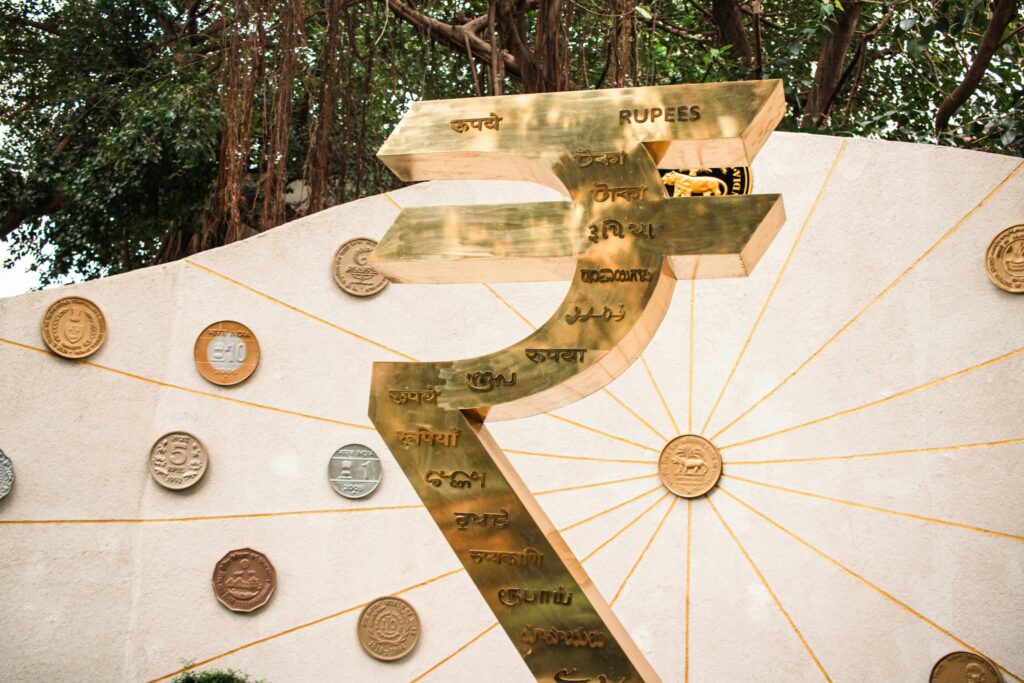Not many businesses in the United States can boast about longevity the way that banks can.
It’s common to hear some banks talk about a century or more of doing business. It’s evidence—a legacy—of a powerful brand that stands the test of time.
Brand awareness in banking is a lot of things, but mainly it’s about trust.
The moment that account holders feel that their money is unsafe at a bank, they rush to withdraw, as we saw with the rapid collapse of Silicon Valley Bank and First Republic Bank in early 2023.
Building trust is not easy. If you want consumers to recognize your brand and bring you their business, it takes a commitment beyond business as usual.
Especially in this digital era, where people have a myriad of options at their fingertips, building a solid brand is paramount to remaining ahead of the competition.
In this article, we’ll cover the basics of brand awareness for banks, including how your institution can benefit from a strategic approach, as well as the brand awareness ROI of a .Bank domain.
The Fundamentals of Brand Awareness
In The Brand Gap, a seminal book on brand strategy and brand building, the author Marty Neumeier begins with what a brand is not:
- A logo.
- An identity.
- A product.
Instead, a brand is a person’s gut feeling about a product, service, or organization. Because brands are defined by individuals, not companies or markets.
Of course, individuals don’t invent brands from thin air. Your company informs people through a wide range of communication channels. Communication about your brand happens through every single interaction with every single consumer you touch.
So, what is brand awareness?
Recognizable brands are essentially a shared feeling that a group of people have. For better or worse, people are aware of that brand, and they all associate it with the same feeling.
By this logic, it’s possible for consumers to be highly aware of your brand, but they all have a poor gut feeling about it. Or, maybe a few people have strong positive feelings about your brand, but overall you have poor recognition.
The ultimate goal of brand awareness for banks is to cultivate a brand that many people recognize, and they all feel good about it. And, of course, the more people have a positive image of your bank, the better it will be for your business.
Benefits of a Recognizable Brand
One of the challenges for legacy brands—such as banks with long histories—is being recognized positively with younger consumers who conduct much of their lives online.
A century-old building and a strong balance sheet don’t translate into a website that consumers flock to when they need a checking account, loan, or wealth-building advice.
Different generations display different “shopping” preferences.
Although younger generations tend to shop by product first, and then search the web and compare options, they will always look to validate their findings through additional indicators of trust.
These indicators will manifest differently across industries and brands. Maybe it’s social proof. Maybe it’s an award or recognition. It could be X number of 5 star reviews.
The thing is, competition in the banking industry is fierce.
Your bank is no longer trying to stand out from the institution down the street. You’re trying to muscle through a crowd of fintechs, digital-only lenders, and international institutions with colossal marketing budgets.
It’s not an easy feat, and the role of trust is more critical than ever.
Establishing a trustworthy brand not only differentiates your bank in this competitive landscape but also paves the way for more meaningful engagement both when attracting and retaining customers.
With this understanding, let’s briefly look at some of the additional benefits of building brand awareness for your bank.
1. It Builds Credibility
Brand awareness can be self-reinforcing. This is why challenger brands can have such a hard time unseating established brands.
The more you can create positive experiences for consumers and expand on those positive interactions, the more credibility your brand will gain.
The stronger your brand is, and the more consistently it proves to be a trustworthy brand for consumers, the more likely it is for those consumers to remain loyal to you, as well as share those positive experiences to others.
2. It Helps You Stand Out in a Crowded Market
When different products or services are practically the same, brand awareness can tip the scales in your favor.
In today’s banking landscape, customers are faced with an abundance of choices. From global giants to innovative fintech startups, each institution vies for attention, making the market incredibly crowded. Your bank, regardless of its size, needs a strong and distinct brand to carve out its own space in this competitive environment.
Large banks may boast about their community involvement and global reach, but what truly resonates with consumers is authenticity and trust. It’s not just about the services offered, but how your bank connects with and supports its customers. A well-established brand cuts through the marketing clutter, demonstrating a commitment and unique value proposition.
By building a brand that genuinely reflects your bank’s values and mission, you differentiate yourself in a sea of competitors. It’s about making your bank not just a choice, but the preferred choice for consumers seeking a reliable and relatable financial partner.
3. It Enhances Customer Loyalty
Loyalty is also a feeling. Consumers feel loyal towards brands that have built trust and provided memorable experiences.
Your efforts to increase brand awareness are really about reminding people of what it means to associate with your bank.
It’s not about the best interest rate or shiny new smartphone app. It’s about your concern for their financial well-being and security and your commitment to doing what’s right for them. Give them that, and they will definitely continue doing business with you.
That is the power of customer loyalty.
4. It Streamlines Marketing Efforts
Another self-reinforcing benefit of brand awareness is that it streamlines marketing efforts.
The better you promote the name (and experience!) of your bank, the faster consumers will recognize your marketing efforts. That recognition translates directly into subconscious impressions.
That’s what it means to be top of mind. The stronger your brand can be subconsciously in a consumer’s mind, the quicker they will think of you when they need a banking product or service.
5. It’s Easier To Attract Talent and Partnerships
Your brand awareness is a proxy for your credibility, and that’s not just important for winning over consumers.
The longevity of your brand is built on the new employees you hire and the partnerships you’re able to form.
And your bank’s brand awareness makes it easier to recruit top-tier talent, as they want to work with you. The same goes for negotiating partnerships with other products that add value to your business.
Legacy counts for a lot, but if you aren’t using it to fuel awareness of your brand, you’re missing out.
Outside-The-Box Brand Awareness Strategies for Banks
To create positive associations with your brand, you must think holistically about the consumer journey and optimize each interaction for trust and delight.
Here are a few tactics that you can follow to build brand awareness for your bank among today’s digital-savvy consumers.
1. Influencer Partnerships
Tens of thousands of mini-celebrities build their own audiences via social media channels.
These people influence their followers to try new products, fashion trends, or subcultural behaviors simply by recommendation. If they recommend your brand, you’ve got a whole bunch of people who will follow suit.
Look for people who have audiences that overlap with your ideal demographics, and start exploring what a paid partnership could look like.
Don’t worry about making it on The Today Show—getting mentioned across an influencer’s social media channels is an excellent alternative.
To learn more, check out this beginner’s guide to influencer marketing.
2. Surprise and Delight Campaigns
It’s easy to get caught up in activities that convert consumers into account holders, but that sort of thing shouldn’t be your only focus.
Focus on your existing customers—they can do the talking for you.
You don’t need to spend a ton of money on surprise and delight campaigns. It could be handing out free flowers at the farmer’s market, or bringing complimentary breakfast to a community gathering.
The reason should be “just because,” in the sense that you’re not trying to compel anyone into a behavior at that moment. You just want to make sure that your customers are especially happy customers.
3. Get Provocative
Before you roll your eyes, reflect on what you see in the financial services industry: it’s a sea of sameness.
Every bank is vying to be the most reliable, consistent, trustworthy brand. For brands that are willing to think divergently, it can be easier to stand out from the crowd.
You don’t need to promote controversial opinions or participate in activities that go against your bank’s values.
But do ask yourself what a traditional bank would do, and then consider the opposite course of action—try different things. You may even pleasantly surprise yourself.
Need an example? Check out Redneck Bank.
4. Gamify Products and Services
Incorporating gamification into your banking services can transform routine financial activities into engaging and rewarding experiences for consumers.
Gamification goes beyond traditional rewards like credit card points or promotional interest rates; it’s about integrating elements of game design into the banking experience to motivate and engage users.
Consider the challenge of saving money, often likened to eating vegetables—good for you, but not always appealing. Many consumers understand the importance of saving but struggle with consistency. This is where gamification can be transformative. By turning the act of saving into a game, complete with challenges, progress tracking, and rewards for achieving financial goals, you can make financial responsibility not just beneficial, but enjoyable.
Gamification taps into the natural human desire for achievement and recognition.
By rewarding customers for positive financial behaviors with more than just monetary incentives—think achievements, levels, and social sharing capabilities—you not only encourage those behaviors but also deepen engagement with your brand. This approach can turn mundane financial tasks into something customers look forward to, significantly enhancing user experience and customer loyalty.
6. Prioritize Storytelling
You’ve heard it before: facts tell, stories sell.
That doesn’t mean simply telling a random story and wrapping it up with “buy our latest high-rate CD.”
Instead, take the time to connect with your customers and capture the stories that move you. After all, stories stimulate feelings.
Use social media to retell and promote those stories. People may not respond immediately, but your goal is to create positive impressions.
The Brand Awareness ROI of a .Bank Domain
When it comes to financial services, nothing triggers negative feelings like a cybersecurity breach.
Even if the crime isn’t the bank’s direct fault, consumers are likely to associate the intense fear and anxiety of the moment with the bank, and its brand.
Using a .Bank domain for your institution is an excellent way to secure your brand online.
If your customers know that your website is only hosted on a trusted domain, they’re less likely to be fooled by hackers spoofing your website on a lookalike domain, and more likely to trust your organization.
Few industries have their own dedicated domain suffix, and .Bank domains are only available to verified members of the global banking community.
A .Bank domain also includes banking cybersecurity measures that aren’t required on common domains. This exclusivity bolsters the reputation of your institution and enhances the feeling of security that goes with your bank brand.
Using .Bank as your domain is beneficial for your marketing efforts as well.
Consumers are used to seeing traditional domains for businesses, including financial institutions. A .Bank domain stands out while adding a layer of intrigue (and legitimacy) to your online presence.
.Bank: Secure Your Brand’s Domain
Building a bank brand with high awareness doesn’t happen overnight. It’s not just a logo redesign or new messaging. It’s an incremental process of upgrading the customer experience at every level.
If you’re starting with a strong brand, then good for you. The road ahead is mostly about expanding what you’ve already built to new audiences.
If you’re struggling to create brand recognition, or if consumer perception isn’t what you’d like it to be, that’s okay, too.
Take the positive brand equity you do have and build from there. Evaluate your brand, ask for consumer feedback, and develop a plan (a rebrand if necessary) that directly addresses the feedback you collected.
Wishing you had a well-known and trusted bank brand isn’t the same thing as committing to building one.
Wherever you are in the journey of brand awareness for your bank, a .Bank domain is a strong step in the right direction.
Schedule a meeting with a member of our team to learn about using the .Bank domain for your institution.



